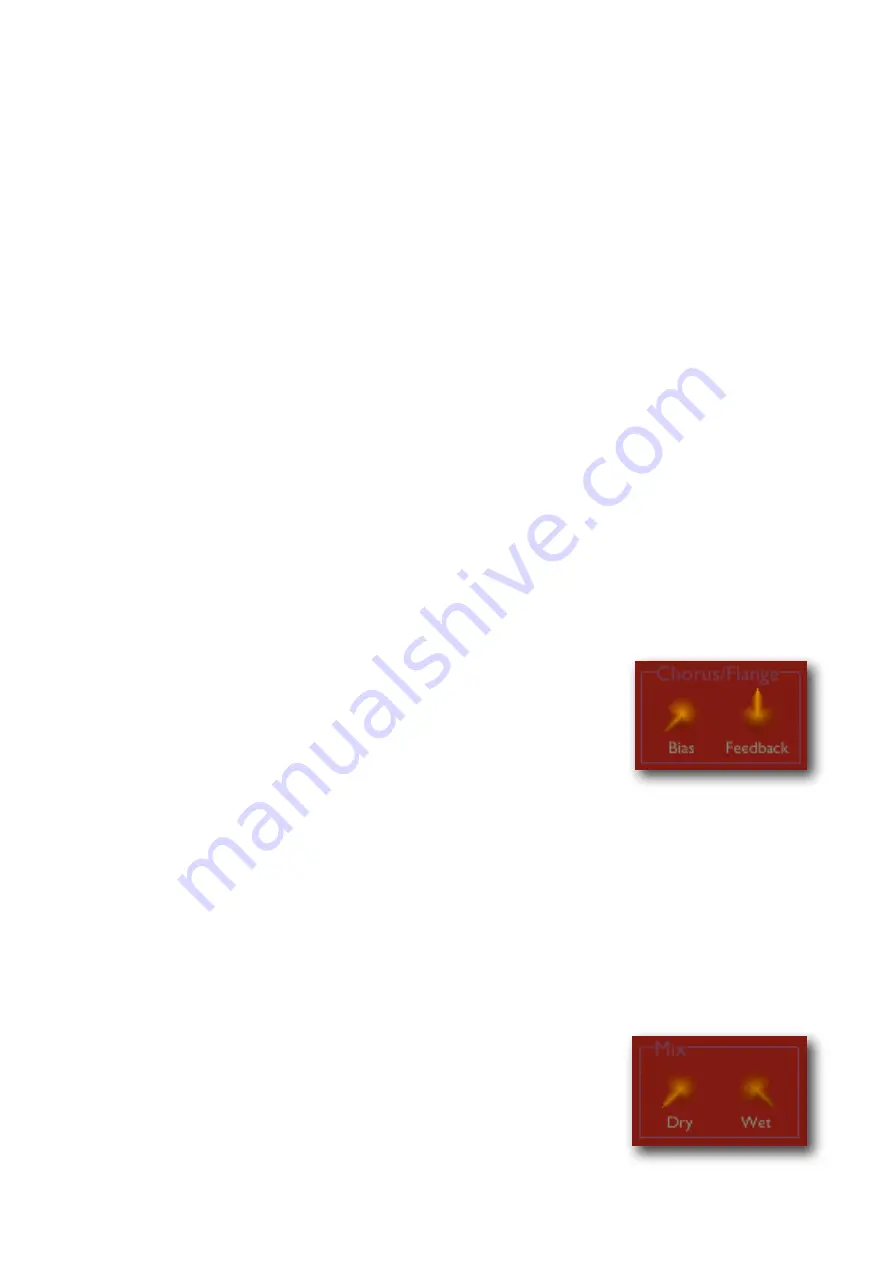
brato effects.
• 1 - ‘Saw Up’. The pitch rises from a minimum to a maximum value then suddenly falls
back to the minimum.
• 2 - ‘Saw Down’. The pitch falls from a maximum to a minimum value then suddenly
rises back to the maximum.
• 3 - ‘Tri’, a triangle wave. Similar to ‘Sine’ but sounds slightly different.
• 4 - ‘Square’, a square wave. The pitch simply alternates between two values.
The ‘Spread’ knob introduces an offset in the LFO phase for each channel that the plug-in
is processing. In the common case of a stereo plug-in, this amounts to altering the LFO
phase of the right channel.
Since the pitch of the vibrato at any point in time depends on the LFO phase, the spread
control effectively introduces a pitch difference between the channels. This results in a
‘wider’ sound and/or a ‘thicker’ chorus effect (when mixed with the dry signal).
Small spread values on e.g. a Sine waveform give the subtle thickening just mentioned.
You can also use more extreme settings - e.g. a spread of 0.5 on a Square waveform causes
the two stereo channels to ‘mirror’ each other’s pitch.
Chorus/Flange
The ‘Bias’ control fundamentally reconfigures the effect from being
a vibrato to being a traditional modulated delay-line chorus/flange.
It does this continuously however so there is a huge range of possi-
bilities between the two extremes.
When bias is set to 1.0 (i.e. it’s in chorus/flange mode) using the
Depth LFO to modulate the depth often sounds good.
The ‘Feedback’ knob introduces feedback into the delay line. This is commonly used in
flange effects to create a more ‘resonant’ sound. Note that you can use this control regard-
less of the setting of bias - even when the plug-in is in pure ‘vibrato’ mode.
Negative values of feedback give phase-inverted feedback in the delay line. It just sounds
a bit different.
Mix
This section simply controls the level of the effected (‘wet’) and
uneffected (‘dry’) signals.
For a vibrato, you’ll probably want the dry level at zero. For a cho-
rus, it’s usual to mix the two signals.
































